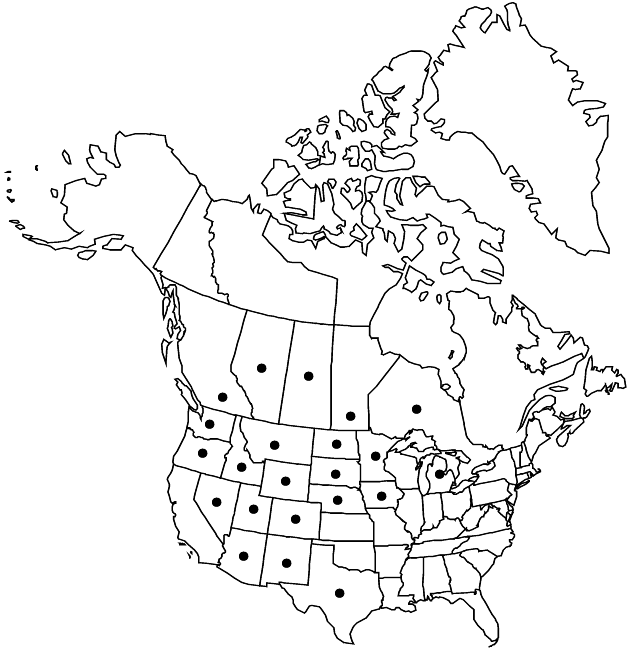Difference between revisions of "Antennaria parvifolia"
Trans. Amer. Philos. Soc., n. s. 7: 406. 1841.
FNA>Volume Importer |
FNA>Volume Importer |
||
| Line 78: | Line 78: | ||
|publication year=1841 | |publication year=1841 | ||
|special status= | |special status= | ||
| − | |source xml=https://jpend@bitbucket.org/aafc-mbb/fna-data-curation.git/src/ | + | |source xml=https://jpend@bitbucket.org/aafc-mbb/fna-data-curation.git/src/f6b125a955440c0872999024f038d74684f65921/coarse_grained_fna_xml/V19-20-21/V19_655.xml |
|tribe=Asteraceae tribe Gnaphalieae | |tribe=Asteraceae tribe Gnaphalieae | ||
|genus=Antennaria | |genus=Antennaria | ||
Revision as of 18:38, 24 September 2019
Dioecious or gynoecious (staminate plants uncommon or in equal frequency as pistillates, respectively). Plants 2–8(–15) cm. Stolons 1–6 cm. Basal leaves 1-nerved, narrowly spatulate to spatulate or oblanceolate, 8–35 × 2–15 mm, tips mucronate, faces gray-tomentose. Cauline leaves linear to narrowly oblanceolate, 8–20 mm, not flagged (apices acute). Heads 2–7 in corymbiform arrays. Involucres: staminate 5.5–7.5 mm; pistillate 8–10(–15) mm (gynoecious), 7–7.2 mm (dioecious). Phyllaries distally white, pink, green, red, or brown. Corollas: staminate 3.5–4.5 mm; pistillate 5–8 mm. Cypselae 1–1.8 mm, glabrous or minutely papillate; pappi: staminate 4–5.5 mm; pistillate 6.5–9 mm. 2n = 56, 84, 112, 140.
Phenology: Flowering late spring–summer.
Habitat: Prairies, pastures, roadsides, mountain parks, open deciduous woods, and drier coniferous forests, usually ponderosa or lodgepole pine
Elevation: 100–3400 m
Distribution

Alta., B.C., Man., Ont., Sask., Ariz., Colo., Idaho, Iowa, Mich., Minn., Mont., Nebr., Nev., N.Mex., N.Dak., Okla. (expected in panhandle), Oreg., S.Dak., Tex., Utah, Wash., Wis. (expected), Wyo., Mexico (Chihuahua, Nuevo León).
Discussion
Antennaria parvifolia is a widespread, polyploid complex of sexual (dioecious) and asexual (gynoecious) populations (G. L. Stebbins 1932b; R. J. Bayer and Stebbins 1987). Although variable morphologically, no infraspecific taxa seem warranted at this time. Sexual (dioecious) populations are known primarily from New Mexico and Colorado; apomictic plants occur throughout the range of the species. Probable sexual diploid/tetraploid progenitors of the A. parvifolia complex include A. dioica, A. marginata, A. neglecta, and A. pulchella/A. media. Antennaria parvifolia is characterized by relatively short stature and relatively small numbers of relatively large heads. The epithet parvifolia has been rendered as “parviflora” in floras, e.g., key in Great Plains Flora Association (1986); E. H. Moss (1959); H. J. Scoggan (1978–1979, part 4). In some floras, A. parvifolia has been confused with A. microphylla; the two are probably not closely related.
Selected References
None.